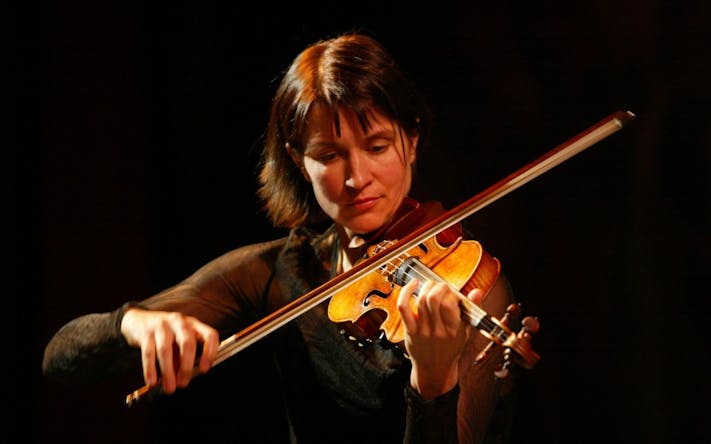When I interviewed Oxford Philharmonic Musical Director Marios Papadopoulos last autumn and requested more Sibelius symphonies on the programme, the reply was more of a 'well, maybe' rather than a 'oh, certainly!', accompanied by a caveat that it would probably be under the aegis of another conductor. Now, a few months later, the tree has borne fruit: Sibelius' 5th Symphony is boldly featuring on election night, and Mr Papadopoulos has assumed his rightful place on the rostrum, having, so he told me in the interval, put in intensive study on the Finnish master and aiming for precision in his interpretation.
Arvo Pärt, now aged 82, hails from Tallinn in Estonia and is of course one of the most prominent living composers of sacred music. With his aquiline nose, furrowed brow and grey beard he's one of the apostles as painted by Tintoretto or perhaps El Greco. I read somewhere that at one birthday concert in Tallinn, a long-stemmed red rose was handed out to each of the players and then to the composer who bounded up on stage, playfully bopping the heads of the musicians with his rose! Soloist Viktoria Mullova, once of Moscow and now from London, may be a match for him. In a 2013 interview she said: "[concert organisers] will usually ask me to play, then ask me what I want to play, and then I give them a choice... because I play what I want to play."
Ms Mullova, colourful in gold jacket, white shirt and dark blue, velvet trousers announced that the brief Passacaglia (2003) and then Fratres ("brothers"; 1992 in this version), both scored for violin, percussion and strings, would be played in succession, and requested no applause. The former was very brief, but a vibraphone (a variant on a xylophone) was prominent early on combining winningly with the solo violin, singing and plucking in descending scales. In the enjoyable Fratres, the violin opened to fast, spidery arpeggios while the percussionist repeated a two-bar pulse on wood block. Repetition rather than development was the name of the game here, as both Ms Mullova and the orchestra's string section produced extended oscillations and pizzicatos at the very top of the range.
Tabula Rasa is a more substantial piece by far. Ms Mullova was joined by Carmine Lauri, Concertmaster (leader) of the Oxford Philharmonic. This is shimmering music whose novelty was the presence of a 'prepared' piano, which has steel screws placed inside the instrument, resting on the strings in carefully-planned formation. The sound is a metallic zinging, to my ear not unlike that of a zither from a Vienna piano-bar. Just as in a Harold Pinter play, the silences are as palpable as the sound. The two violins pierced the air with cat-like delicacy and purpose. The piano pinged like raindrops on a window pane, then knelled occasionally with a portentous clang. In the second part the strings wove a web of sustained notes; were one floating in space looking down on earth, this is what you would want in your headphones. I felt as though hypnotised, and there seemed no particular reason why the concluding bass drone piece should ever have ended.
After the interval came Sibelius' 5th Symphony, a perfect match for the Pärt in its other-worldliness. This is music not so much for a shipwrecked mariner on a desert island as for a mountaineer atop a Himalayan peak, looking down and across the hemisphere on a morning of cloud-inversion, the spatial horizon more vital than the height. Yet I must confess to a feeling of mild disappointment in this rendering. Conductor Neeme Järvi once remarked that conductors tended to compete over who conducts Sibelius in the slowest tempo. Here I felt that both the marked tempo of the 2nd movement ('andante mosso, quasi allegretto') and of the 3rd ('allegro molto') came over in a slightly laggardly manner, and whereas the five horns made a fine sound, the three trumpets sounded distinctly under-powered. The combination of brass and timpani is one of the glories of this work, but here the timpanist made little impression, even at the famous last chords of the finale with their extraordinary irregularity of spacing. The absent Tristan Fry on the timpani was sorely missed. But elsewhere there was much pleasure: the horns in their minatory fanfare that opened the symphony, and the passage at the end of the opening movement with a fine surge from the brass. There was also that section in the opener where a whirring string section generated the utmost feeling of tension, led by first violin Tamas Andras; what a treat he is to watch, full of graceful body-rhythm.




